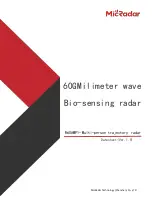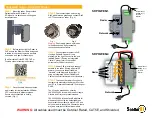
ImpulseRadar
CrossOver® User Manual V1.4
Page 28 (31)
Appendix C, GPS
How RTK Works
RTK involves a stationary base station and one or more mobile GPS receivers, also known as rovers.
Provided that the base station has continuous line-of-sight to each rover, it transmits GPS corrections
to each in real time using radio waves. If a sufficient number of satellites are visible, RTK can provide
a fixed position, within a fraction of an inch. If insufficient satellites are visible, RTK can provide only a
float solution, with a precision of a few inches.
Fixed RTK
RTK uses a complicated mathematical formula or algorithm to calculate the exact number of radio
wavelengths between the satellites and the base station antenna -- a process known as ambiguity
resolution -- and yield either a fixed or float solution. In a fixed solution, the number of wavelengths
is a whole number, or integer, and the algorithm is constrained to yield a whole number. A low
number of visible satellites, poor satellite constellation geometry and a poor radio link between the
base station and the rover may prevent a fixed solution.
Float RTK
In a float solution, the algorithm does not yield an acceptable fixed solution, so the ambiguity is
allowed to be a decimal or floating-point number. According to Tripod Data Systems, a float solution
typically generates precise coordinates to between 4 and 18 inches over a known distance between
two points of just over half a mile. If a float solution is the only solution available, it may be possible
to reinitialize an RTK system, or simply wait, for a more precise fixed solution. However, if poor
satellite visibility is to blame, a fixed solution may be unavailable.
Considerations
The precision of RTK data collection depends on the distance between the base station and the
rovers, so it’s desirable to keep the distance between them to less than 6 miles. RTK systems are
available in single and dual frequency versions; dual frequency versions are typically faster, more
precise and operate over longer distances than single frequency versions, but they are
correspondingly more expensive.




































